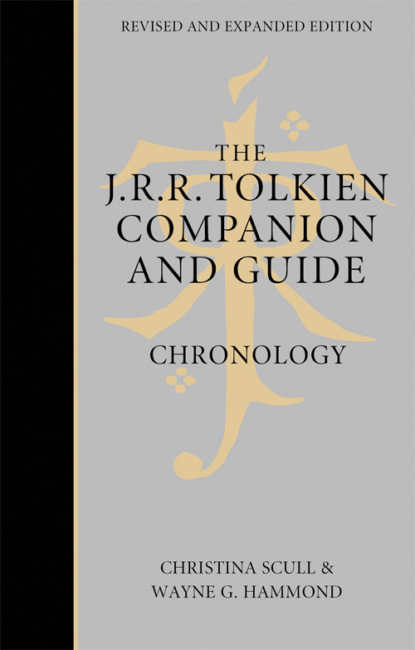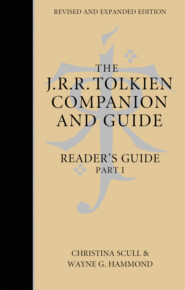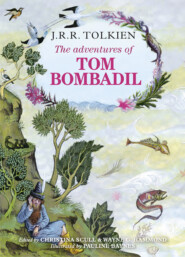По всем вопросам обращайтесь на: info@litportal.ru
(©) 2003-2024.
✖
The J. R. R. Tolkien Companion and Guide: Volume 1: Chronology
Настройки чтения
Размер шрифта
Высота строк
Поля
25 October 1932 Tolkien replies to a letter from R.W. Chapman of Oxford University Press, noting that he must complete the Clarendon Chaucer or ‘lose for ever the goodwill of the Clarendon Press’ (i.e. the distinguished imprint of Oxford University Press which is to publish the book). Its glossary has been written and corrected, but needs to be collated with the notes, which are also complete except for the selection from the Prologue to the Canterbury Tales and the ‘Monk’s Tale’ but are nearly all too long. ‘If I could send in the notes after drastic cuts and have the bits back again typed fairly quickly I think I could soon complete the job, in spite of the burdens of the day and the night.’ Once the Chaucer is out of the way Tolkien would like to work on other books, indeed feels that he ought to, not only in deference to what is expected of professors but because during the past few years, through research and teaching, he has learned a good deal worth writing about. He has done much work on the Old English matter of Finn and Hengest, though more would be needed to make it suitable for publication. He suggests his prose translation of Beowulf, but feels that it should be preceded by introductory matter on the diction of Old English verse, its metre, and so forth, and include notes concerning particularly difficult problems in the text. ‘All this stuff is in existence as lectures or papers to societies and if only I could free my mind and conscience of the Chaucerian incubus might soon be sufficiently polished up to hand over’ (Oxford University Press archives). He asks if Oxford University Press have thought about a cheap edition of Beowulf aimed at the non-specialist, who under the new English syllabus has to read the entire poem. He points out the need for editions of Elene and Exodus which will remain set books in the English School; he has existing commentaries to both.
27 October 1932 R.W. Chapman writes to Tolkien, offering help with typing and urging him to get the Chaucer off his mind so that he can move on to other things. He thinks a prose Beowulf a good idea provided that it is not too long. Kenneth Sisam is already working on Elene.
28 October 1932 Tolkien attends an English Faculty Board meeting. He is re-elected to the Applications Committee. The Applications Committee has approved S.R.T.O. d’Ardenne as a full B.Litt. student; Tolkien is to continue as her supervisor.
2 November 1932 Tolkien attends a Pembroke College meeting.
30 November 1932 Tolkien, as ‘Father Christmas’, writes to his children in response to early letters. He tells them that the North Polar Bear has disappeared, and that the ‘snowbabies holidays’ begin on 1 December.
December 1932 The first of two parts of Tolkien’s essay Sigelwara Land is published in Medium Ævum for December 1932.
2 December 1932 Tolkien attends an English Faculty Board meeting. The report of the English Faculty Library Committee is presented. The Applications Committee has appointed Tolkien and Dorothy Everett examiners of the B.Litt. thesis of Mary Elizabeth Carroll of St Hilda’s College, The Phonology of Hampshire Place-Name Forms, Particularly as Found in Documents of the Thirteenth and Fourteenth Centuries, Compared with That of the Usages of Winchester, and of Other Texts for Which a Hampshire Origin Has Been Suggested. – Tolkien attends a Pembroke College meeting.
3 December 1932 Michaelmas Full Term ends.
18 December 1932 Tolkien writes to Kenneth Sisam, informing him that Sigelwara Land will run through three numbers of Medium Ævum (in the event, it will appear in only two). He thanks Sisam, probably for information about Gallican psalters, and says that he must check the exact spelling of a passage in the Paris Psalter for the last instalment of his essay. He is putting the last touches to his paper on the ‘Reeve’s Tale’, which Sisam had seen, for the Transactions of the Philological Society (Chaucer as a Philologist: The Reeve’s Tale). He will then turn to the Clarendon Chaucer and hopes to be rid of that burden soon. David Nichol Smith is helping him to ‘curtail my overwhelming mass of notes’. He hopes that his Beowulf translation might come next, ‘but life is short, & so is the day. I am obliged to examine Oxford (complete new syllabus), Manchester and Reading, for the meeting of ends, the coming year; and probably P. Mods [Pass Moderations] at the end of it. Also there are lectures & B.Litts and goodness knows what’ (Oxford University Press archives). If he can find any free time from children and work, he would like to visit Sisam either at home or at the Oxford University Press.
Christmas 1932 Tolkien, as ‘Father Christmas’, writes four pages to his children, dated 23 December, significantly expanding the ‘mythology’ of the Father Christmas letters. He tells how the North Polar Bear became lost in caves decorated long ago with paintings of animals and other figures, and in which he found goblins, ‘to us very much what rats are to you, only worse’. Having rescued Polar Bear with the help of the Cave Bear, Father Christmas found his storerooms disturbed by goblins, which he drove away with the help of Red Gnomes. He apologizes for not being able to carry as many toys this year: the goblins have smashed some of them, and he is taking ‘useful stuff’ (food and clothes) to people who are hungry and cold. Enclosed with the letter is an elaborate picture of Father Christmas in his sleigh drawn by eight pair of reindeer above the Oxford skyline; of the North Pole; of Father Christmas, the North Polar Bear, and the Cave Bear looking at cave paintings while goblins lurk around corners; and of the party that Father Christmas will have on St Stephen’s Day. A second picture, mainly copied from reproductions of real prehistoric cave paintings, purports to show some of the art found in the goblin caves. In addition, Tolkien sends, as from the North Polar Bear, a letter written in an alphabet he has made up from marks in the caves.
?End of 1932–beginning of 1933 Tolkien lends The Hobbit in typescript to C.S. Lewis; at this stage (it seems) the story ends with the death of Smaug, near the end of the chapter ‘Fire and Water’ as finally published in 1937. (See further, entry for The Hobbit in Reader’s Guide.) During the next three years the same typescript will be lent to other friends, including *M.E. (Elaine) Griffiths, a B.Litt. student under Tolkien’s supervision, and the *Reverend Mother St Teresa Gale, Mother Superior at Cherwell Edge in St Cross Road in Oxford, a convent of the Order of the Holy Child Jesus to which was attached a hostel for Catholic women in the Society of Oxford Home-Students.
1933 (#ulink_21214fb7-0cfb-536f-b38c-4b262ae0c5f9)
?1933–?1936 Tolkien writes a substantial part of a long poem, *The Fall of Arthur. It progresses through several different versions and narrative outlines, but is abandoned unfinished after 954 lines. Tolkien will send one version to his friend R.W. Chambers for comment (see entry for 9 December 1934). See note.
15 January 1933 Hilary Full Term begins. Tolkien’s scheduled lectures for this term are: Elene (continued) and The Vision of the Cross (i.e. The Dream of the Rood) on Tuesdays and Thursdays at 11.00 a.m. in the Examination Schools, beginning 17 January; Old English Textual Criticism on Tuesdays at 12.00 noon in the Examination Schools, beginning 17 January; Völsunga Saga on Thursdays at 12.00 noon in the Examination Schools, beginning 19 January; and The Language of the Vespasian Psalter Glosses on Fridays at 12.00 noon in the Examination Schools, beginning 20 January.
18 January 1933 Tolkien attends a Pembroke College meeting.
25 January 1933 C.S. and Warren Lewis are Tolkien’s guests for dinner at high table at Pembroke College. After dinner they retire to the Common Room for dessert and wine, then stand around the fire talking mainly about Samuel Johnson and Anthony Trollope. Tolkien and the Lewis brothers go to C.S. Lewis’s rooms in Magdalen College for more conversation until 11.00 p.m., when Tolkien drives Warren most of the way home.
26 January 1933 Tolkien attends an English Faculty Library Committee meeting at 2.15 p.m. in the Library.
30 January 1933 Adolf Hitler becomes Chancellor of Germany.
3 February 1933 At an English Faculty Board meeting, in Tolkien’s absence, the Applications Committee reports that it has appointed Tolkien and Kenneth Sisam examiners of the B.Litt. thesis of *N.R. Ker of Magdalen College, A Study of the Additions and Alterations in MSS Bodley 340 and 342.
4 February 1933 C.S. Lewis writes to his friend Arthur Greeves: ‘Since term began [15 January] I have had a delightful time reading a children’s story Tolkien has just written [presumably The Hobbit]…. Whether it is really good (I think it is until the end) is of course another question’ (They Stand Together: The Letters of C.S. Lewis to Arthur Greeves (1914–1963), p. 449).
9 February 1933 The Oxford Union Society debates the motion ‘that this House will in no circumstance fight for its King and Country’. The motion is carried 275 votes to 153 and is widely discussed in the press.
14 February 1933 Tolkien and Dorothy Everett examine M.E. Carroll of St Hilda’s College viva voce on her B.Litt. thesis, The Phonology of Hampshire Place-Name Forms, at 2.30 p.m. in the Examination Schools. – The Society for the Study of Mediæval Languages and Literature holds its second meeting.
17 February 1933 Tolkien attends a Pembroke College meeting. – He and Dorothy Everett sign their report (written by Tolkien) on the examination of M.E. Carroll.
2 March 1933 Tolkien certifies that S.R.T.O. d’Ardenne has completed course work towards her B.Litt.
8 March 1933 Tolkien attends a Pembroke College meeting.
10 March 1933 Tolkien attends an English Faculty Board meeting.
11 March 1933 Hilary Full Term ends.
16 March 1933 Tolkien writes to Kenneth Sisam that he hopes to see him at his home at Boar’s Hill, Oxford, on 18 March. Tolkien is very pleased because he has been given a complete set of the Oxford English Dictionary. He has been reading the thesis of N.R. Ker and finds it hard going.
21 March 1933 Tolkien and Kenneth Sisam examine N.R. Ker of Magdalen College viva voce on his B.Litt. thesis, A Study of the Additions and Alterations in MSS Bodley 340 and 342, at 2.30 p.m. in the Examination Schools.
c. 25 March 1933 Tolkien and C.S. Lewis discuss the latter’s response to The Three Musketeers by Alexandre Dumas as a work with no background behind the plot. They remark on how the word romance is used to describe works by authors as different as Dumas and William Morris, and agree ‘that for what we meant by romance there must be at least the hint of another world – one must “hear the horns of elfland”’ (C.S. Lewis, 25 March 1933, They Stand Together: The Letters of C.S. Lewis to Arthur Greeves (1914–1963), p. 452).
April 1933 Tolkien’s name is included at the end of a list of twenty scholars, all of them involved in some manner with education, ‘associat[ing] ourselves with the efforts that are being made to introduce Esperanto as a regular subject of instruction, and to encourage its use in the schools of the world’. This manifesto will be published in The British Esperantist for May 1933 as ‘The Educational Value of Esperanto’.
1 April 1933 In Germany the Nazis begin to persecute the Jews. Jewish businesses will be boycotted – most are soon liquidated – and Jewish lawyers and doctors barred from their professions.
14–17 April 1933 The twenty-fourth British Esperanto Congress is held in Oxford, with headquarters at the Randolph Hotel. Tolkien is one of its patrons, together with the Duke of Connaught, the Mayor of Oxford (Alderman G.H. Brown), Sir Michael Sadler, Professor *G.E.K. Braunholtz, Councillor the Rev. John Carter, the Master of Balliol (Dr. A.D. Lindsay), and the Principal of Ruskin College (A. Barratt Brown).
23 April 1933 Trinity Full Term begins. Tolkien’s scheduled lectures for this term are: Old English Verse Texts (for those beginning the Honour Course) on Tuesdays and Thursdays at 11.00 a.m. in the Examination Schools, beginning 25 April; The Germani on Tuesdays at 12.00 noon in the Examination Schools, beginning 25 April; and Prolegomena to the Study of Old English and Old Norse Poetry on Thursdays at 12.00 noon in the Examination Schools, beginning 27 April. E.O.G. Turville-Petre is to teach a class in Old Norse on behalf of Tolkien.
26 April 1933 Tolkien attends a Pembroke College meeting.
24 May 1933 The Oxford University Gazette reports that Tolkien has been appointed a Moderator in Literis Graecis et Latinis (Pass Moderations) from the first day of Michaelmas Term 1933 to first day of Michaelmas Term 1934.
12 May 1933 Tolkien attends an English Faculty Board meeting.
18 May 1933 Tolkien’s uncle, Thomas Evans Mitton, dies.
8 June 1933 Tolkien chairs an English Faculty Library Committee meeting at 2.15 p.m. in the Library. – English Final Honour School Examinations begin. Tolkien is chairman of the examiners.
11 June 1933 At a board meeting of Hið íslenzka bókmenntafélag (the Icelandic Literary Society), Sigurður Nordal nominates Tolkien as an honorary member.
16 June 1933 Tolkien attends an English Faculty Board meeting. He is appointed to the Committee for the Nomination of Public Examiners in the Honour School of English Language and Literature and in the Pass School, Group B.6, to Hilary Term 1937. – He also attends a Pembroke College meeting.
17 June 1933 Trinity Full Term ends. – The annual general meeting of Hið íslenzka bókmenntafélag confirms with applause Tolkien’s honorary membership.
20 June 1933 Tolkien attends a Pembroke College meeting.
21 June 1933 Encaenia.
26 July 1933 Tolkien and Hugo Dyson entertain the Lewis brothers at dinner in Exeter College. Dyson and Tolkien are in exuberant form, especially Dyson. As it is vacation they dine in the Common Room with various members of Exeter and their guests. Nevill Coghill is among those present. They eat a dinner of cold soup and lobster salad served with cider, then retire to another room to drink sauterne, and to deck chairs in the garden for coffee. After some conversation Tolkien, Dyson, the Lewis brothers, and a clergyman walk to Magdalen College and stroll in the deer park. At about 10.00 p.m. they adjourn to the Magdalen Common Room for drinks. The party breaks up about 10.20.
?End of July 1933 Tolkien and his wife attend Prize Day at the Oratory School, where their son John is a pupil. Also among the attendees are Professor and Mrs Francis de Zulueta and Father Vincent Reade. A paper by the Right Reverend Dom John Chapman, O.S.B., the Abbot of Downside, on Cardinal Newman and the Oxford Movement, is read in Chapman’s absence by Lord FitzAlan, chairman of the School’s Board of Governors, followed by remarks by Lord Rankeillour ‘on the circumstantial difficulties which had militated against the practical success of so many of Cardinal Newman’s admirable projects’, excepting the Oratory School which has had ‘a steady output of achievement’ (‘Prize Day at the Oratory School’, The Tablet, 5 August 1933, p. 175).
?Summer 1933 John Tolkien and his father erect a trellis in front of 20 Northmoor Road to screen their garden from the eyes of passers-by.
?August–early October 1933 Probably during the summer vacation Tolkien begins to write lectures on ‘Beowulf: General Criticism’ which he will give during Michaelmas Term 1933. These may be the work first called Beowulf with Critics and later Beowulf and the Critics (see *Beowulf: The Monsters and the Critics). Tolkien will later produce a revised and enlarged version of the lectures, presumably for ‘Beowulf: General Criticism’ as delivered in Michaelmas Term 1934 or 1936.
14 September 1933 While driving with his family to visit relatives in Birmingham, Tolkien passes through Hall Green, formerly the hamlet of Sarehole. He finds that most of the scenery and buildings he remembers from his boyhood have been destroyed or much altered. He will record in his diary that Sarehole had become ‘a huge tram-ridden meaningless suburb where I actually lost my way’ (quoted in Biography, p. 124).
?October 1933 Tolkien submits, probably by invitation, a poem, Firiel (*The Last Ship), for publication in the Chronicle of the Convents of the Sacred Heart, the journal of a Roman Catholic order which has an Oxford branch (established 1929) at 11 Norham Gardens. Firiel dates from the early 1930s, and is possibly written at this time. Tolkien is in close contact with the Oxford convent: Priscilla Tolkien will recall going there for children’s parties in the summer and also at Christmas when her father provided entertainment.








